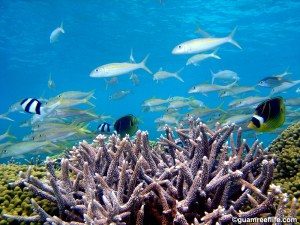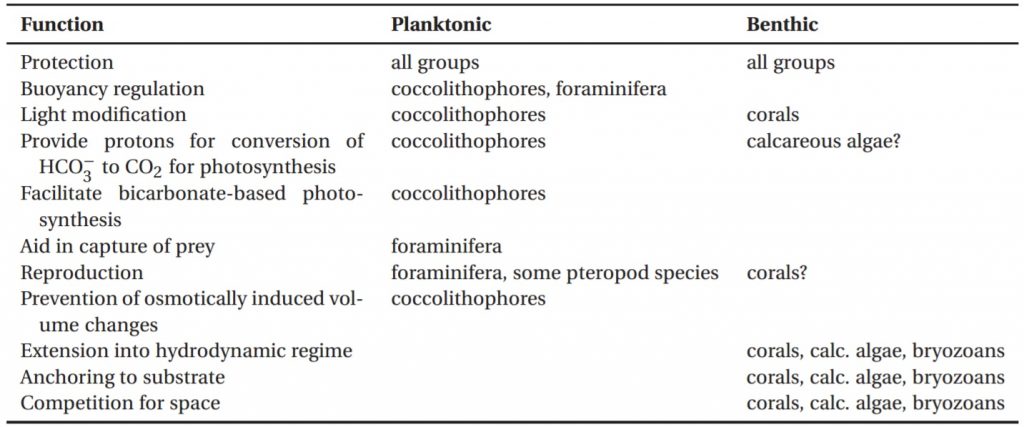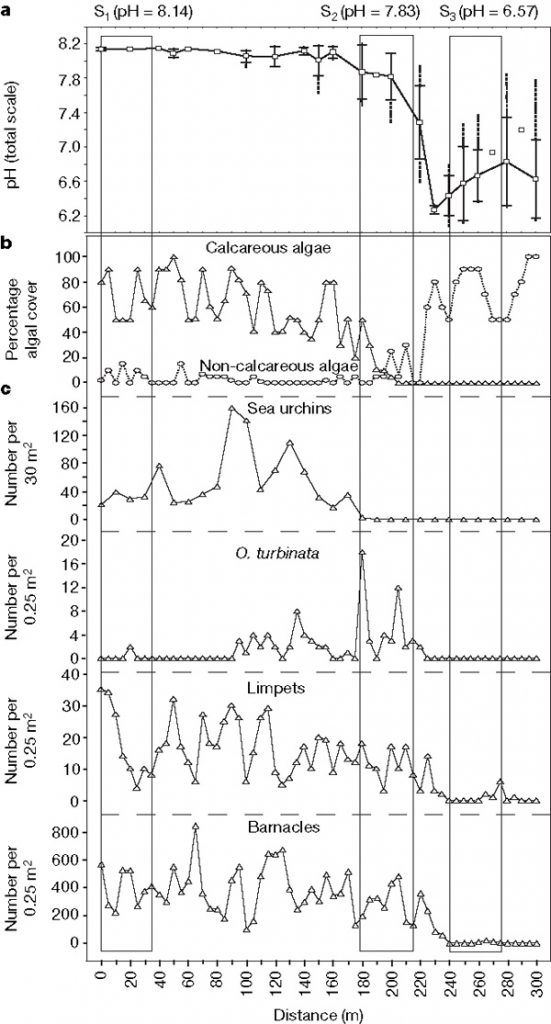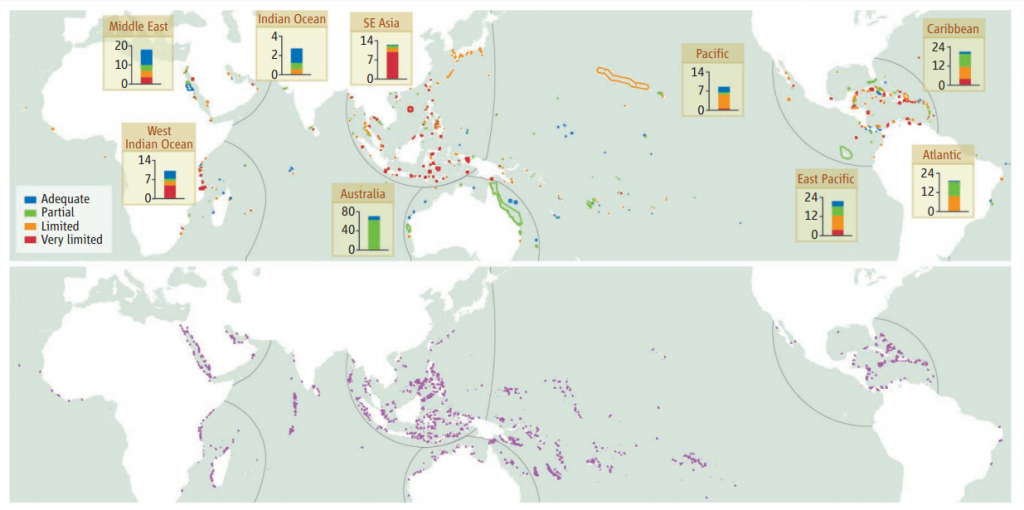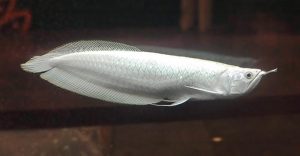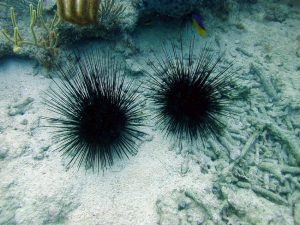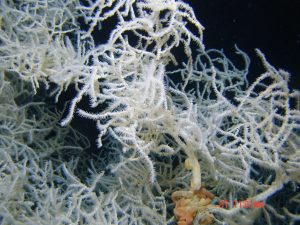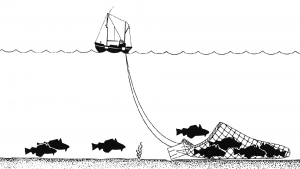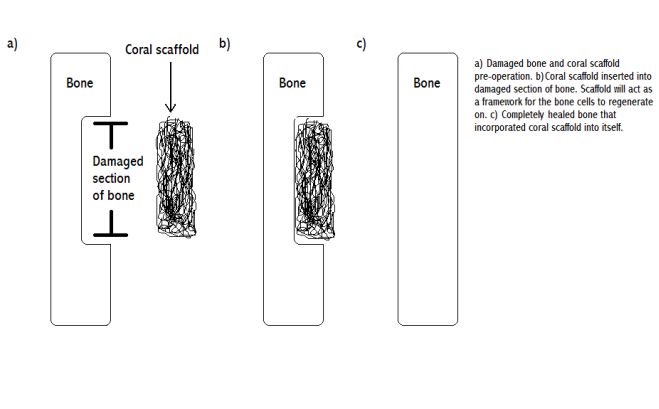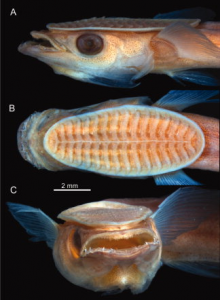While lions are considered the kings of the jungle, lionfish seem to be exerting their reign over the Atlantic coast of the United States as well as the Caribbean. Lionfish may seem like an innocent beauty, with they’re intricately patterned spines and stripes, but really they are not as harmless as they seem. You may have heard of the saying, “one bad apple spoils the barrel”, well, the lionfish appear to be having a similar effect on the reefs of the Western Atlantic. As lionfish population numbers in the Atlantic increase, they seem to be wiping out other native fish species, upsetting the ecosystem and food web of the native reefs.
So how sizable was this lionfish invasion? Well, lionfish abundances increased to account for 40% of the total predator biomass in the Caribbean and Gulf of Mexico region between 2004 and 2010.1 Figure 1 shows the gradual increase in population sizes of the lionfish in the Western Atlantic during this time period. These invasive lionfish have progressively been taking over the Atlantic coast of the United States, as well as the Caribbean region, which has been drastically impacting the ecosystem of the native reefs. Lionfish have successfully established populations along the Atlantic coast of America ranging from Florida, all the way to North Carolina and even Rhode Island.2 They have also been successful in invading Bermuda, Bahamas, and Caribbean Sea.2 But how exactly were these lionfish introduced to the Western Atlantic if they are not native to this region? To give a little background on this notorious fish, lionfish are actually native to the western Pacific region, so they have traveled a long distance to invade the Atlantic.3 It is believed that these fish were introduced through their release from aquariums or even possibly though ballast water (a method I mentioned in more detail in my previous blogpost).3 It is due to human impact that we are seeing such detrimental effects to the western Atlantic.
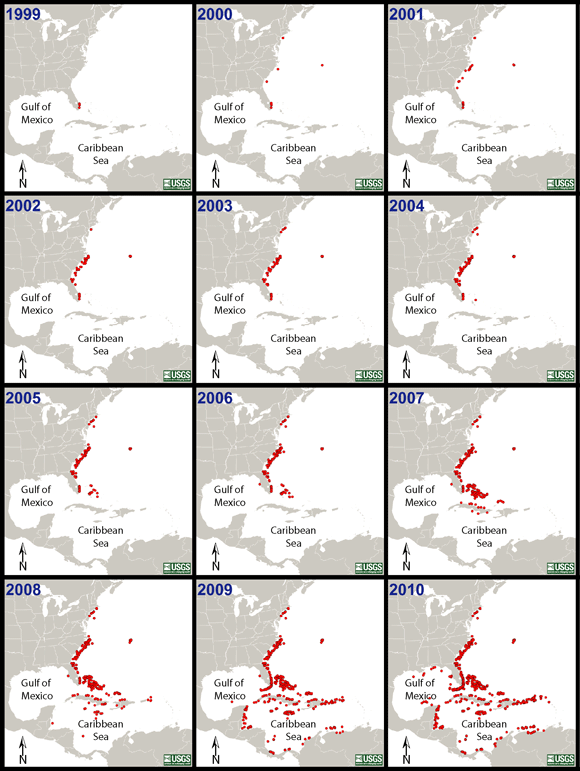
Figure 1. Map of the Atlantic Coast of the U.S. and Caribbean region, showing the increase in lionfish population on a yearly basis between 1999 and 2010. Red dots indicate lionfish occurrences. Journal of Biogeography 2
What makes the lionfish such a successful invasive predator? The answer to this question would be, the several unique physiological and biological characteristics, as well as the new ecological niche the lionfish adopts in non-native waters. A characteristic specific to the lionfish that gives it an advantage over other species is its venomous spines which are used as a defense mechanism (Figure 2).3 Since the lionfish has invaded non-native waters, the lack of predators also serves as an advantage and encourages the survival of the species.3 Invasive species are more likely to survive if they are successful at evading predation and the lionfish exhibits this quality in the Western Atlantic. The lionfish’s spawning rate is year-round and at a frequency of every four days, also factoring into its successful establishment and expansion.2 Overall, this fish knows what it is doing and has exerted its dominance in the Western Atlantic.

Figure 2. Image of an adult lionfish and its venomous spines. Marine Ecology Progress Series3
We’ve talked a lot about what makes the lionfish a successful invasive species in the Western Atlantic, but we haven’t really touched on the effects the lionfish may have on the native reef habitats. Lionfish have had a dramatic impact on native small-bodied reef fish. The influence of the invasive lionfish can be seen from data collected in the Bahamas region where there was a 65% decline, between 2008 and 2010, in the combined biomass of 42 small-bodied reef fish species, which serve as prey for the lionfish.1 This change in biomass can be seen in Figure 3 below.

Figure 3. Graph of the change in biomass of different groups of organisms during the study on lionfish conducted in the Bahamas, between 2008 and 2010. The graph shows that there was a 65% decline in small-bodied fish that served as prey for the lionfish. The graph also shows a decline in other competitors of the lionfish as well as other large-bodied non-competitors. On the other hand, the biomass of small-bodied species that were not prey for the lionfish stayed the same during this time two year time period. PLOS1
This kind of dramatic decline in fish biomass can have negative effects on the food web of the ecosystem. Introduction of the invasive lionfish can impact native fish, whether it be through predation or competition, produce cascade effects (indirect impacts on other species and components of the ecosystem), leading to the disturbance of the food web.4 Any small, direct, influence an invasive species has on the native habitat, will eventually create larger, indirect, ecological impacts on the ecosystem. If lionfish run out of their preferred prey in the Atlantic, they may resort to feeding on the juveniles of fisheries species which are economically important.5 Caribbean coral-reef aquarium fish trade is also of great economic value, but, of the top 20 ornamental species in the Western Atlantic, 7 are included in the top 10 families that constitute the diet of the lionfish in the Bahamas.5 These are examples of some of the economic impacts of the lionfish invasion, what about ecological impacts on a larger scale? Well, because invasive lionfish lead to a dramatic decline in native species in the Western Atlantic, this direct influence can also lead to the destruction of coral reefs in the region. Lionfish are known to prey on parrotfish and other herbivorous fish, and dramatic declines in these species have been known to lead to the demise of reef-building corals and algal overgrowth, which would be detrimental to reefs.5
Further research on the ecological and economic impacts of the invasive lionfish in the Western Atlantic can help us combat the damage that has been done to the native reef habitats. Understanding the role invasive species, such as the lionfish, play in non-native habitats will help identify a problematic invasive species and help prevent critical damage. And finally, raising awareness on specific cases of invasive species, will educate people on the human impact we have on our oceans and the coral reefs. I hope that through raising awareness, we can also encourage advocacy on conservation of coral reefs, which promote such biodiversity and serve us both economically and ecologically. The lionfish has been an invasive species that scientists have been analyzing for the past several years, stay tuned, for my next post, to find out what invasive species we should be looking out for in the near future.
Resources:
1 Green, Stephanie J., John L. Akins, Aleksandra Maljković, and Isabelle7 M. Côté. “Invasive Lionfish Drive Atlantic Coral Reef Fish Declines.” PLOS ONE. Public Library of Science, 7 Mar. 2012. Web. 21 Mar. 2017. <http://journals.plos.org/plosone/article?id=10.1371%2Fjournal.pone.0032596>.
2 Hines, Andrew, et al. “Reconstructing the lionfish invasion: insights into Greater Caribbean biogeography.” Journal of Biogeography 38.7 (2011): 1281-1293.
3 Whitfield, Paula E., et al. “Biological invasion of the Indo-Pacific lionfish Pterois volitans along the Atlantic coast of North America.” Marine Ecology Progress Series 235 (2002): 289-297.
4 Arias-González, Jesús Ernesto, et al. “Predicted impact of the invasive lionfish Pterois volitans on the food web of a Caribbean coral reef.” Environmental research 111.7 (2011): 917-925.
5 Albins, Mark A., and Mark A. Hixon. “Worst case scenario: potential long-term effects of invasive predatory lionfish (Pterois volitans) on Atlantic and Caribbean coral-reef communities.” Environmental Biology of Fishes 96.10-11 (2013): 1151-1157.

